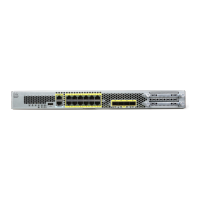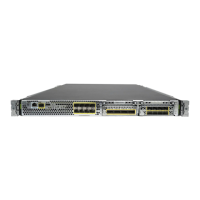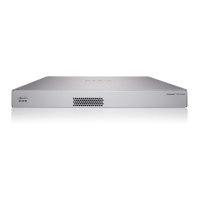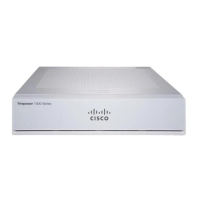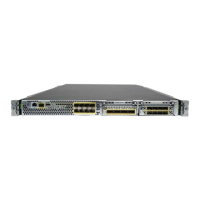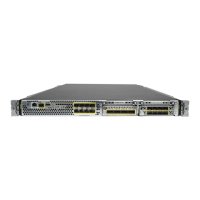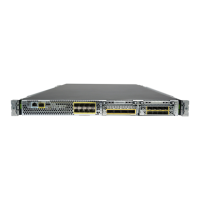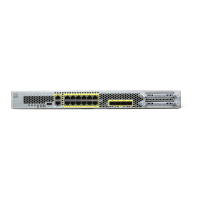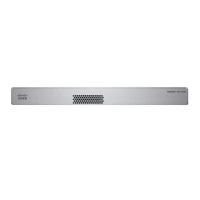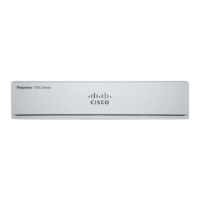27-21
Cisco Security Appliance Command Line Configuration Guide
OL-10088-01
Chapter 27 Configuring IPSec and ISAKMP
Configuring IPSec
Step 2 Map the lists to one or more crypto maps, using the same crypto map name.
Step 3 Map the transform sets to the crypto maps to apply IPSec to the data flows.
Step 4 Apply the crypto maps collectively as a “crypto map set” by assigning the crypto map name they share
to the interface.
In Figure 27-4, IPSec protection applies to traffic between Host 10.0.0.1 and Host 10.2.2.2 as the data
exits the outside interface on Security Appliance A toward Host 10.2.2.2.
Figure 27-4 How Crypto Access Lists Apply to IPSec
Security Appliance A evaluates traffic from Host 10.0.0.1 to Host 10.2.2.2, as follows:
• source = host 10.0.0.1
• dest = host 10.2.2.2
Security Appliance A also evaluates traffic from Host 10.2.2.2 to Host 10.0.0.1, as follows:
• source = host 10.2.2.2
• dest = host 10.0.0.1
The first permit statement that matches the packet under evaluation determines the scope of the
IPSec SA.
Note If you delete the only element in an access list, the security appliance also removes the associated crypto
map.
If you modify an access list currently referenced by one or more crypto maps, use the crypto map
interface command to reinitialize the run-time SA database. See the crypto map command for more
information.
We recommend that for every crypto access list specified for a static crypto map that you define at the
local peer, you define a “mirror image” crypto access list at the remote peer. The crypto maps should
also support common transforms and refer to the other system as a peer. This ensures correct processing
of IPSec by both peers.
IPSec peers
92616
Internet
outside outside
Security
Appliance
Firewall A
Security
Appliance
Firewall B
Host
10.0.0.1
Host
10.2.2.2
IPSec Access List at "outside" interface:
access-list 101 permit ip host 10.0.0.1 host 10.2.2.2
IPSec Access List at "outside" interface:
access-list 111 permit ip host 10.2.2.2 host 10.0.0.1
Traffic exchanged between hosts 10.0.0.1 and 10.2.2.2 is protected between
Security Appliance Firewall A "outside" and Security Appliance Firewall B "outside"

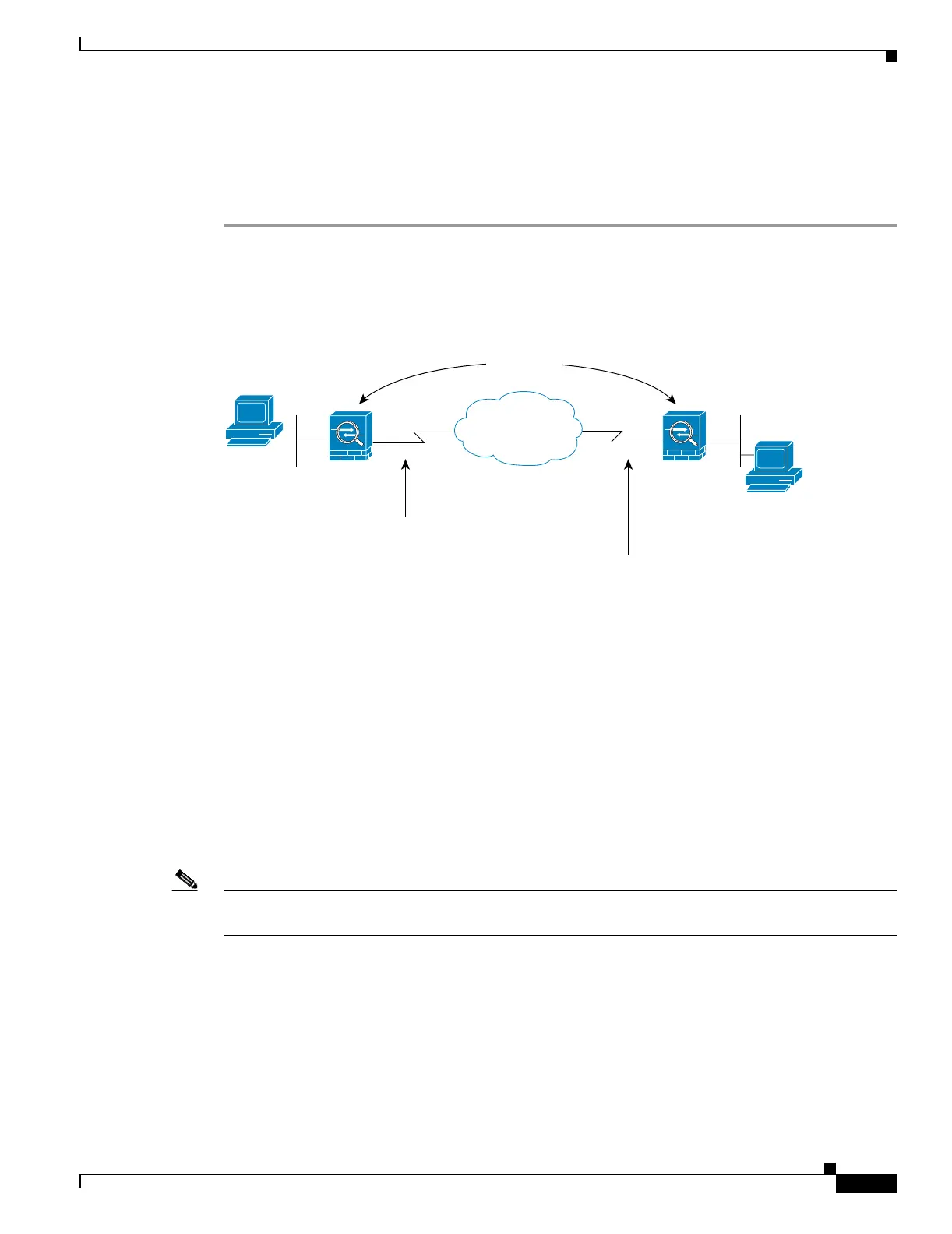